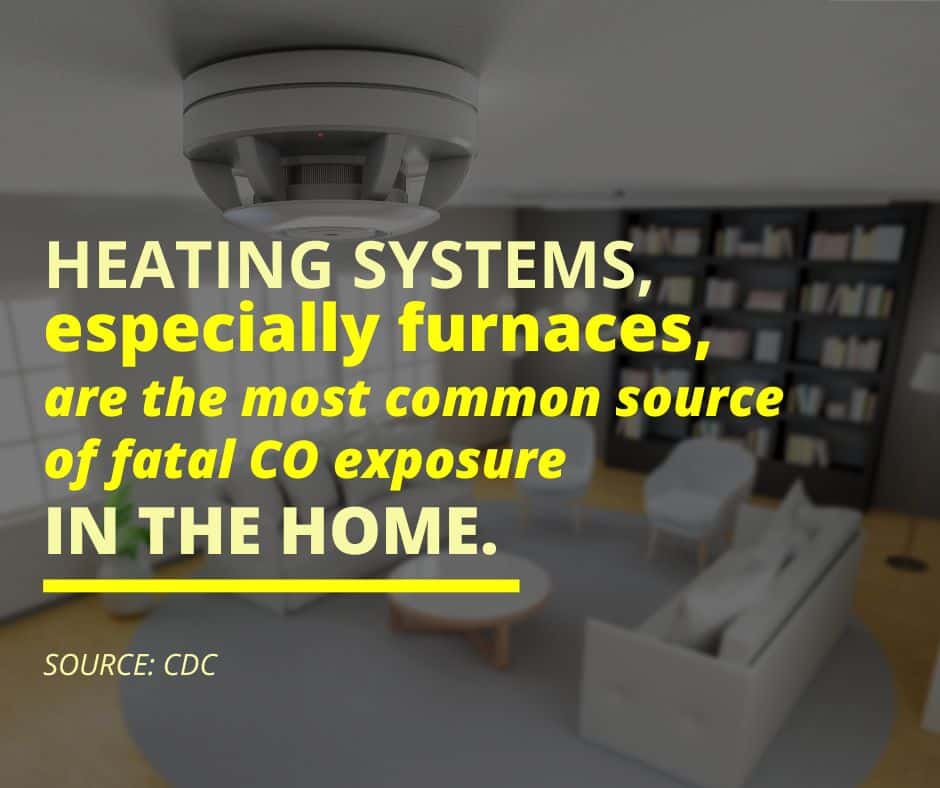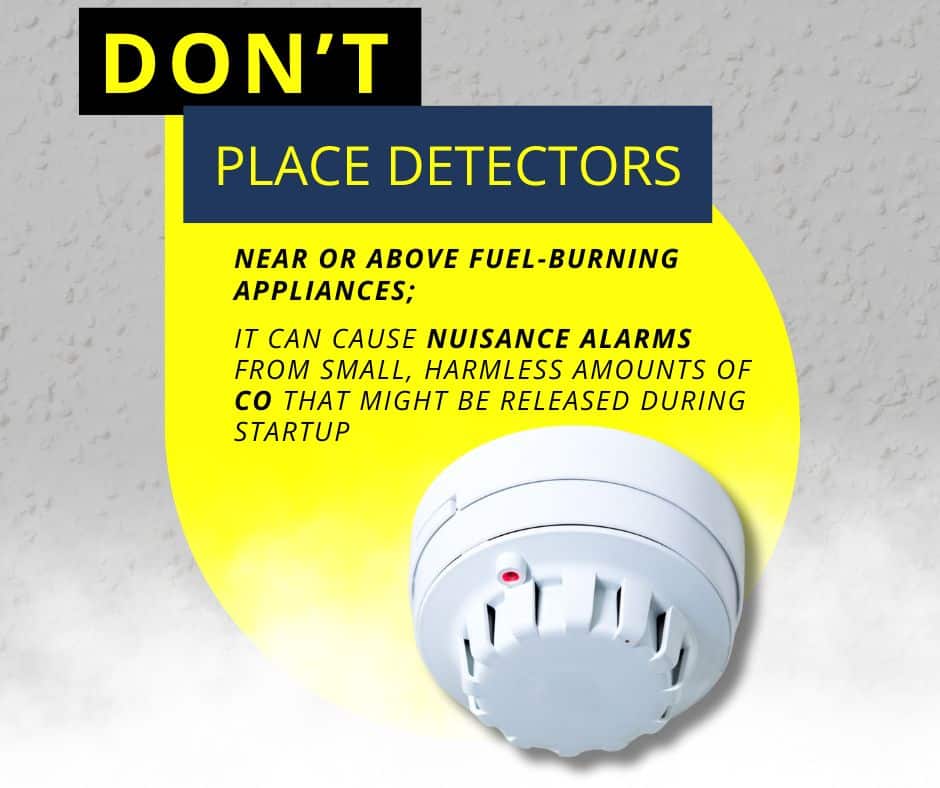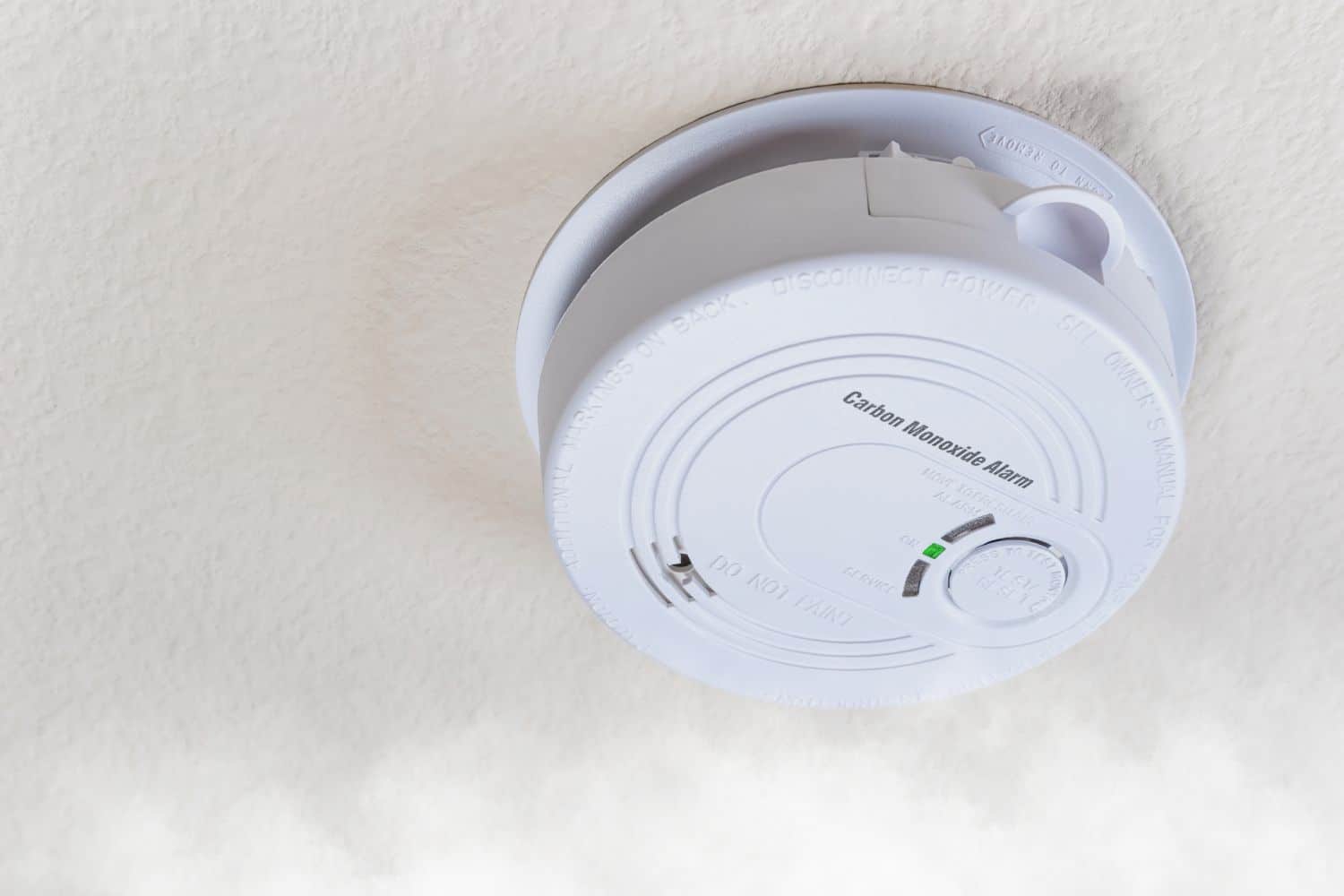Here is what you need to know about where to install each carbon monoxide detector in your home, why placement matters, and how to maintain them.
Carbon monoxide (CO) is called the silent killer because you cannot see it, smell it, or taste it. This gas can build up without warning and create serious risks for people inside the home. Even low levels of CO exposure can cause health problems. High levels can be deadly.
The Centers for Disease Control and Prevention reports that, every year in the United States, thousands visit the hospital for treatment. The good news is that carbon monoxide detectors are affordable and easy to install.
What Causes Carbon Monoxide in a Home?
Carbon monoxide forms when fuel does not burn fully. Common sources of CO in a home include:
• Gas furnaces
• Gas stoves and ovens
• Fireplaces and wood stoves
• Water heaters that burn fuel
• Space heaters that use fuel
• Cars running inside attached garages
These appliances usually do not produce dangerous levels of carbon monoxide if they are working properly and vented as designed.
The problem comes when something fails. A blocked chimney, a cracked heat exchanger, or a car left running in the garage can allow CO to build up to dangerous levels inside the home.

Where to Install Carbon Monoxide Detectors
Here’s where to install a carbon monoxide detector for the best protection…
• In or near every bedroom, so people are alerted while sleeping
• On each level of the home, including basements
• Near attached garages
• In rooms that contain fuel-burning appliances, if the manufacturer recommends it
It is important to follow the manufacturer’s instructions about exact placement. Most detectors work best on the ceiling or high on a wall because carbon monoxide mixes evenly with air and rises with warm air currents.
Carbon monoxide spreads through a house without any visible or noticeable signs. Unlike smoke, it does not trigger your senses.
Detectors near bedrooms are critical because many carbon monoxide deaths happen at night while people are sleeping. A properly placed detector can sound the alarm before CO levels become deadly.
Having detectors on each level of the house means you are covered no matter where the problem starts. For example, if a furnace in the basement begins leaking carbon monoxide, a detector on that level can provide early warning.
What Inspectors Look For
At P.I. Home Inspection, we always check for carbon monoxide detectors during inspections. We note whether they are present, where they are placed, and whether they appear to be in working order.
Our reports highlight missing or misplaced detectors as a safety concern. While we do not test the full function of each unit, we recommend that homeowners test them monthly and replace them when needed.
How to Maintain Carbon Monoxide Detectors
Carbon monoxide detectors need regular care to keep working as they should. Here are a few simple steps:
• Test your detectors once a month using the test button
• Replace batteries at least once a year if your detector uses replaceable batteries
• Replace the entire unit every five to ten years, depending on the model
• Keep the detectors clean and free of dust
A good habit is to check your detectors when you change your clocks for daylight saving time.
When to Call a Professional
If your carbon monoxide alarm sounds and anyone in the home has symptoms like headache, dizziness, nausea, or confusion, leave the house right away.
Call 911 from outside the home. Once the emergency is over, have a qualified technician check your fuel-burning appliances, vents, and chimney to find and fix the problem.
You should also call a professional if:
• You see rust, stains, or soot around fuel-burning appliances
• A pilot light keeps going out
• You smell exhaust inside the home
• A detector keeps going off for no clear reason

Common Questions About Carbon Monoxide Detectors
Are carbon monoxide detectors required by law?
In many states, including Illinois, carbon monoxide detectors are required in homes with fuel-burning appliances or attached garages. Even if not required, they are highly recommended for safety.
Can I use a combination smoke and carbon monoxide detector?
Yes. These combination units work well and help save space if installed correctly.
Where should I avoid placing a detector?
Do not place detectors near windows, doors, or vents where fresh air could interfere with accurate readings. Also, avoid putting them in bathrooms or other humid areas unless specified by the manufacturer.
How can I tell if my detector is still good?
Check the date on the unit. If it is past its lifespan or fails a test, replace it right away.
Why Placement Matters During a Sale
Buyers and agents want to see that basic safety measures like carbon monoxide detectors are in place.
Missing detectors may lead to repair requests or delays during closing. Lenders and insurance companies may also expect detectors to be installed before approving a loan or policy.
For sellers, making sure detectors are present and properly placed shows that the home has been cared for. It is a small detail that helps support a smoother transaction.
Conclusion
Now you know where to install a carbon monoxide detector, as well as how many your home needs. Carbon monoxide detectors are one of the simplest ways to make a home safer. They provide an early warning that could save lives.
By understanding where to place them and how to care for them, you can protect your family from a hidden danger.
If you are unsure about the condition or placement of detectors in your home, P.I. Home Inspection can help identify gaps and offer guidance during an inspection.

